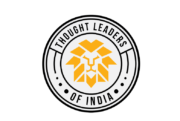In today’s rapidly shifting business environment, leadership in India’s C-suite is more crucial than ever. The role of top executives now demands a blend of emotional intelligence, adaptability, and strategic foresight. With economic changes, technological disruptions, and evolving consumer expectations, effective leadership in India is essential. This blog explores practical approaches for C-suite executives to lead their organizations through uncertain times, supported by real-world examples and data-driven insights.
The Changing Landscape of Leadership in India
The COVID-19 pandemic has transformed the business landscape in India, compelling organizations to rethink their operations. A McKinsey survey found that 92% of executives believe their organizations must evolve to stay competitive. This shift requires strong leadership in India, particularly in addressing challenges like supply chain disruptions, remote workforce management, and changing regulations. For example, Tata Consultancy Services (TCS) quickly adapted to remote work during the pandemic, using digital tools to ensure productivity while keeping employees safe. This agility is a testament to the importance of effective leadership in India.

Embracing Agile Leadership in India
Agile leadership is essential for C-suite executives in India during times of uncertainty. This approach requires flexibility and a readiness to adapt, while also fostering innovation within the organization. Deloitte reports that companies adopting agile practices are 1.5 times more likely to outperform their competitors. Infosys, a global technology leader, exemplifies agile leadership in India. The company swiftly transitioned to remote work, leveraging its digital platforms to maintain collaboration and communication. This agility not only ensured business continuity but also strengthened employee engagement, highlighting the impact of leadership in India.
The Power of Transparent Communication in Leadership
Transparent communication is a cornerstone of effective leadership in India, especially during uncertain periods. Clear communication helps build trust and reduce anxiety among employees. Gartner’s research shows that organizations with high employee engagement are 21% more profitable. HDFC Bank, one of India’s leading private banks, emphasized transparent communication during the pandemic. Regular town hall meetings allowed leadership to address employee concerns and share business updates. This openness not only boosted morale but also reinforced HDFC Bank’s reputation as a trustworthy employer, showcasing the power of leadership in India.
Investing in Leadership Development
Continuous development is key to strong leadership in India. Executive coaching and leadership programmes enhance decision-making, emotional intelligence, and strategic thinking. The International Coaching Federation found that executive coaching can improve individual performance by 70%. Mahindra Group has implemented an extensive leadership development program called “Mahindra Leadership University.” This initiative equips future leaders with the skills needed to tackle challenges and drive innovation. Through this investment, Mahindra Group ensures that its executives are prepared to lead effectively in India.
Data-Driven Leadership in India
In a data-driven world, C-suite leaders in India must use analytics to inform their decisions. Leveraging data insights helps align decisions with market trends and consumer needs. McKinsey reports that companies using data-driven decision-making are 23 times more likely to acquire customers. Flipkart, India’s leading e-commerce platform, uses advanced analytics to understand consumer behavior and optimize its supply chain. During the pandemic, Flipkart’s data-driven approach allowed it to anticipate demand shifts and adjust inventory levels, showcasing effective leadership in India.
Building Resilience in Leadership
Resilience is a vital trait for C-suite leaders in India, enabling them to overcome setbacks and emerge stronger. Building a resilient organization involves cultivating a culture that embraces change and fosters innovation. PwC found that resilient organizations are 2.5 times more likely to achieve high performance. Reliance Industries demonstrated remarkable resilience during the pandemic by quickly pivoting its business model. The launch of JioMart, connecting local grocery stores with online consumers, is an example of how adaptability can drive growth, underscoring strong leadership in India.
Conclusion
As C-suite executives in India navigate uncertain times, embracing agile leadership, fostering transparent communication, investing in development, leveraging data, and building resilience are critical for success. By leading with purpose and adaptability, C-suite leaders can guide their organizations through challenges and unlock new opportunities for growth. In a world where change is constant, effective leadership in India is more important than ever. By implementing these strategies, executives can inspire their teams, drive success, and ensure a brighter future for Indian businesses. At TLOI (Thought Leaders of India), we are committed to empowering leaders to navigate the complexities of the C-suite. Join us in our mission to strengthen leadership in India and unlock the potential of your organization.

